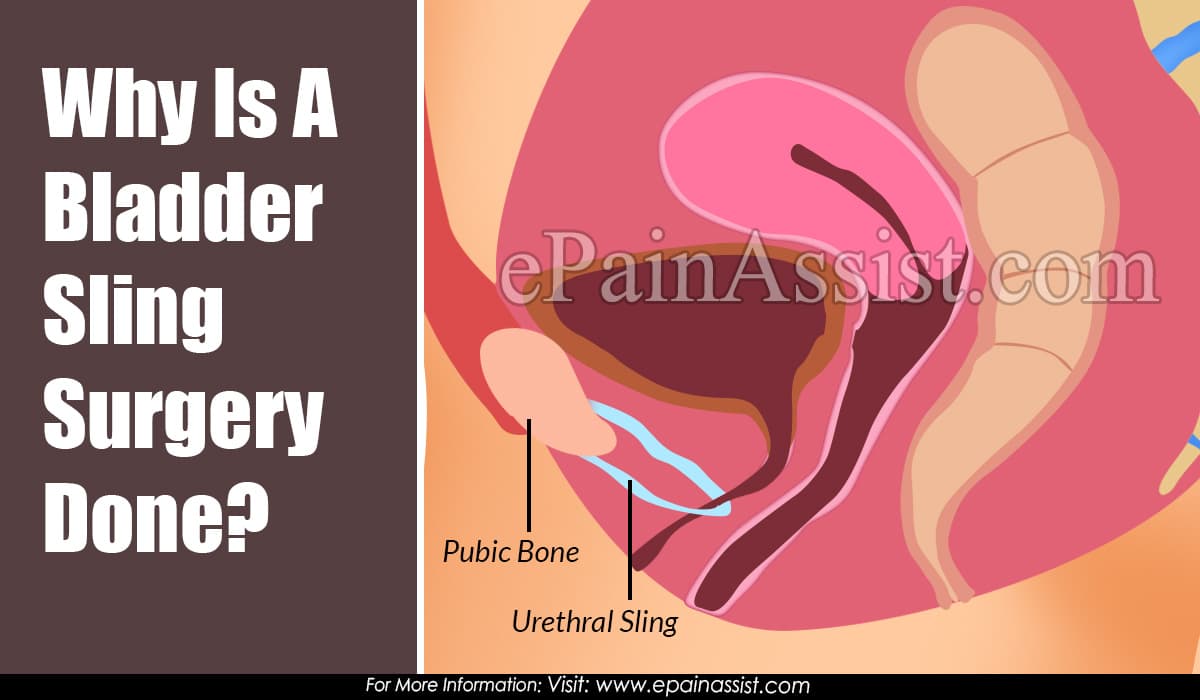Why Is A Bladder Sling Surgery Done?
To understand about a bladder sling surgery and why is it done, it is important to understand a condition called urinary incontinence. Females after repetitive childbirths and with growing age start having loose muscles around the urethra and the bladder. This results in the bladder and urethra not being able to hold urine and even with slight stress like couching or sneezing they contract resulting in leaking urine. This condition is called as urinary incontinence. Urinary incontinence can be of varying severity. While some individuals leak urine with extreme stress, others may leak it even with minimal stress like walking for a while.
A bladder sling procedure addresses this issue and prevents urine from leaking. A bladder sling is made up of a mesh which is inserted in the bladder neck through a vaginal and an abdominal incision. While the surgery may be able to treat the problem of urinary incontinence, there have been several complications, risks, and side effects of this surgery, some of which are quite serious which puts the need for this surgery in question.
In fact, the FDA is of the observation that a bladder sling surgery with insertion of a mesh has risks that far outweigh the benefits and thus is not recommended and many physicians have stopped this procedure, although there are still many physicians who perform a Bladder Sling Surgery.

What Are The Risks, Side Effects, And Complications Of A Bladder Sling Surgery?
The major complications that arise from a Bladder Sling Surgery are painful sexual intercourse, tissue erosion, vaginal scarring, and organ perforation which can be quite serious.
The vaginal mesh which is inserted during Bladder Sling Surgery is made of plastic which may lead to allergic reactions in many individuals and may also lead to infections.
In some cases, females have reported side effects of a Bladder Sling Surgery like complete inability to carry out activities of daily living let alone recreational activities while they were extremely active before the surgery.
There have been complaints of leg cramps and pain to such an extent that even walking becomes a task for such individuals. Some individuals who have undergone a Bladder Sling Surgery have become virtually disabled and have been confined to a wheelchair.
In conclusion, a Bladder Sling Surgery is done for urinary incontinence and involves insertion of a plastic mesh around the bladder neck to prevent the bladder and urethra from contracting and leaking urine.
While the bladder sling surgery prevents urinary incontinence there are several complications and side effects of the surgery which fat outweigh the benefits and hence is not recommended by many physicians as a mode of treatment for urinary incontinence.
Also Read:
- Urinary Bladder Cancer: Types, Symptoms, Stages, Treatment- TUR Surgery, Immunotherapy
- Urinary Bladder Rupture: Causes, Types, Symptoms, Diagnosis, Treatment
- Bladder Training for Women to Prevent Overactive Bladder and Incontinence
- Treatment for Bladder Pain Syndrome or Interstitial Cystitis: Surgery, Recovery, Home Remedies
- Urinary Bladder Infection: Symptoms, Causes, Treatment, Prognosis, Prevention, Risk Factors, Diagnosis
- Prolapsed Bladder: Stages, Causes, Symptoms, Treatment & Surgery
- 3 Ways to Fix Prolapsed Bladder
